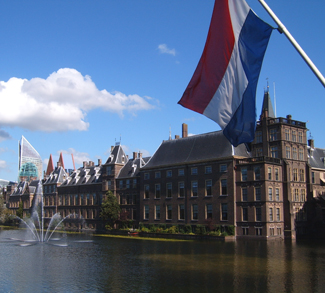The Dutch model of corporatism, often referred to as the “Polder model” has received the attention of scholars and policymakers for years. Corporatism is the term used to describe tri-partite bargaining and policymaking between the state, capital and labour within a nation state. Representatives of the state, capital and labour usually take the form of governments, employer’s organizers and labour unions (or works councils), and they are known as “social partners” in industrial relations’ parlance. The first loose arrangements resembling a corporatist framework in Europe are often traced back to Denmark’s “Septemberfogliet Agreement” of 1899. It was not long before several Western European countries began to favour corporatist frameworks of industrial relations themselves. Various nation-specific models of corporatism began to flourish across Western Europe, of which the Dutch Polder model was one. National governments began to favour corporatism in order to increase productivity, keep employment levels high, inflation levels low, temper wage increases and avoid strikes. Put another way, governments turned to this particular consensus-based decision-making model in order to reduce conflicts between labour and capital, and thus ensure social peace which was regarded to be the sine qua non for continued economic growth.
For the first time in modern history, labour began to be recognized as a legitimate interlocutor in the decision-making process and important gains were won by labour. But renowned political scientists such as Leo Panitch astutely observed that while labour was now regarded as a legitimate social partner in nation states, this new recognition masked important discrepancies in distributional power between the three social partners seated at the table. In the Netherlands, the main social partners of the tri-partite decision-making model were the government, labour unions such as the Federatie Nederlandse Vakbeweging (FNV), and national employers’ organizations such as the Verbond van Nederlandse Ondernemingen- Nederlands Christelijk Werkgeversverbond (VNO-NCW), and even here the asymmetrical distribution of power between these social partners only became more evident as the years passed by. The transformation of Dutch industrial relations is a true testament to the imbalances of power between capital, labour and the state which grew over time.
Dutch corporatism during the first twenty years after the Second World War was punctuated by the Dutch government’s heavy hand in wage issues, and during this period the central institutions of the Polder model remained virtually untouched. The performance of Dutch corporatism was enhanced when the relevant social partners were involved in income policy – that is, engaged in highly cooperative behaviour. While some studies indicate that governments often turned to corporatist strategies, the social partners did not always comply, opting for competition instead. The 1970s witnessed a brief non-regulatory interlude, followed by a period of coordinated decentralization which has left the main social partners of this consociational state with a much meeker say in policymaking.
The trend characterizing Dutch industrial relations since the 1980s has been exponential decentralization. Studies have demonstrated how patterns of decision-making in the Netherlands have not been converging but diverging, with the old familiar corporatist boards still resilient in some industries, while in other areas like Dutch healthcare, the government, private insurance companies, professional associations and new regulatory bodies compete for authority.
If we were to pinpoint a crisis that can be described as the watershed in the transformation of the Polder model, it can be narrowed down to the unemployment crisis of the 1980s, which is sometimes called the ‘Dutch Disease.’ In response to the crisis, the Dutch government aimed at reducing welfare costs, reducing deficits, encouraging competitiveness, containing wage increases, and combating unemployment and inflation. In 1982, Dutch labour unions and employers’ organizations negotiated the Wassenaar Agreement which attempted to reach these goals. What is so interesting about the Wassenaar Agreement, according to the Dutch political scientists Jaap Wolderndorp and Hans Keman, is that it was the result of a threat made by the government that it would continue to completely determine income policy if no agreement in the market sector was reached. Put another way, the government forced them to reach an agreement, which caused the social actors to rethink and reorder their preferences, lest they wanted the income policy in the market sector to be completely government-directed, like that in the semi-public sector. The door was thus opened to the proliferation of low-wage, part-time employment which has become a lasting feature of Dutch industrial relations. Minimum wage and social benefits have also been drastically reduced since then, in nominal and real terms by about 25%.
The trend toward divergence and decentralization which marked industrial relations after the 1980s makes it essential to discern many other nuances when discussing changes in Dutch corporatism. For instance, in specific industries such as the hotel industry and independent call centers, two competing collective labour agreements (CLAs) now exist. This allows employers to “choose” between diverse wage regimes and push down the lowest agreed wages. Meanwhile in the industries where CLAs continue to be densely regulated with high coverage, comparatively higher wages and more generous benefits, employers are less insulated from the temptation to turn toward outsourcing activities in order to maximize profits from cheaper CLAs.
As far as labour market flexibility is concerned, it has noticeably increased and dismissal protection is quite relaxed, especially following the introduction of the Flexibility and Security Act in 1999. This began the remarkable transformation of what had been an unchanged social right in the Netherlands since 1945. The presence of unions at the shop-floor has also drastically reduced, and there is no legislation covering their representation in companies. Instead, the formidable responsibility for monitoring whether employers actually implement the clauses of CLAs has been shifted to the works councils, which often lack the adequate expertise. There is as well the added issue of the discrepancies that exist between the representation and visibility of high and low wage-earners: higher-paid workers tend to be overrepresented in works councils whereas the concerns of their lower-paid counterparts are treated as “external” issues. The growing penchant for divergence and decentralization in Dutch industrial relations certainly raises the question of whether “Polder model” is a misnomer today.
The opinions, beliefs, and viewpoints expressed by the authors are theirs alone and don’t reflect any official position of Geopoliticalmonitor.com.




